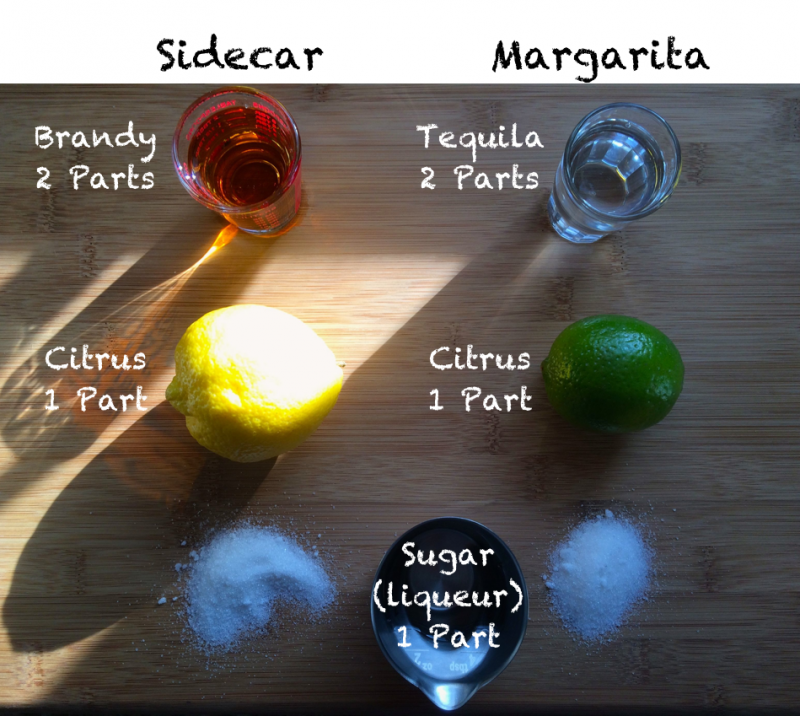Surely you have noticed the great number of new cocktails that have turned up on the menus of your local taverns and restaurants.
On one hand, you have to admire the creativity, but sadly, most of these cocktails are not very good. A few common problems plaguing contemporary cocktail lists are cringeworthy names, far too many ingredients, poorly executed house syrups, and a severe lack of balance.
Many new-wave cocktails fall short because their creators have not acquainted themselves with the classics. So, my first suggestion for the aspiring cocktail creator is to learn the classics inside and out and pay close attention to what makes them work.
When you examine classic cocktails, you must first be struck by their simplicity.
Let’s look at the Margarita and the Sidecar. Both of these classic cocktails have just three ingredients. They both feature a base spirit – Brandy for the Sidecar and Tequila for the Margarita. To this base, we add a balance of tart and sweet with citrus and sugar (liqueur). Presto! You have created a classic cocktail.

Comparing Two Classic Cocktails
Think about lemonade. Most of us like lemonade, and most of us can tell you what makes a good lemonade – namely, fresh ingredients – and why it works. It works because a big glass of freshly squeezed lemon juice would be pure torture, as would a big glass of sugar water. But if you put the two together, you have balance and a tasty treat.
Quick Tips for Making Great Cocktails
- The key is balance, so knowing what is tart, what is sweet, and what is a bit of both is a valuable tool.
- Less is more—not always, but most often, with cocktails. Each ingredient should play a vital role in the mix.
- There are many different citrus fruits, each with its own properties. Try making your own citrus blend for cocktails and see how this changes your favorite drink.
- Simple syrup doesn’t have to be so simple. Take the base simple syrup and steep spices, citrus zest, herbs, or whatever you desire in the base to make your simple not so simple.
In the end, build cocktails that you like with no apologies. We are all different. You may like things a bit sweet, while I like them a bit tart. There really is no right or wrong. You are drinking for pleasure, and the only goal that matters is maximizing this pleasure.

Start with an Apéritif
The same applies when you are out. When ordering drinks at the bar, you have control (or you should). Confidently ask the bartender to eliminate sugar additions or add more sugar if desired. Any good bartender will happily oblige your polite request. When you order a steak in a restaurant, you ask for it to be done to your liking; a drink is no different.
Your Kitchen is not a Bar
You can’t possibly be ready to make every cocktail under the sun or have every available spirit.
When serving cocktails to guests, choose a drink based on your first preference (as well as your guests) and make it an executable drink that can be made in a few minutes.
Take a lesson from the pros and learn to batch cocktails for large gatherings. Batching, when done properly, does not sacrifice quality or presentation in any way. It greatly speeds up the process, gets drinks in your guests’ hands faster, and relieves you of a lot of unwanted stress. See our guide on batching cocktails.
The Tools of the Trade
Again, your home is not a bar, but you do need a few basic tools to create cocktails efficiently at home. We have created a simple guide for you: The BevX Bar Tools Guide.
Repetition Makes Perfect
Making cocktails is no different than any other skill — practice makes perfect. You will unlikely have the time or desire to master a hundred different cocktails, but you can and should master a cocktail or two for every season. Trust me — your significant other will love to be involved in your home apprenticeship.
